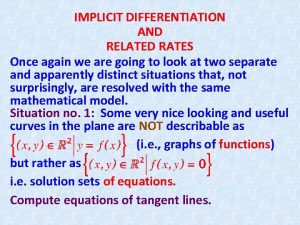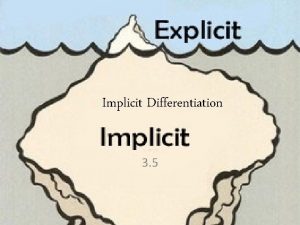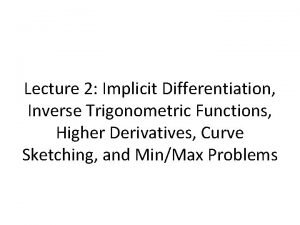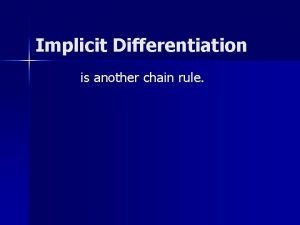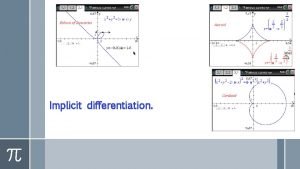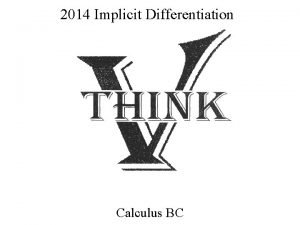Implicit Differentiation Related Rates Implicit and Explicit Functions








- Slides: 8

Implicit Differentiation & Related Rates

Implicit and Explicit Functions � Explicit equations are solved for y and written as a function of x. � Example: � Implicit y = x 2 + 4 x equations aren’t solved for y. � Example: x 2 + 4 y = 24

How To Use Implicit Differentiation � Differentiate both sides of the equation with respect to x. � Apply the basic rules of differentiation. Any time you differentiate a y put a dy/dx next to it. � Isolate all of the terms with a dy/dx on one side of the equation. � Factor out the dy/dx. � Divide on both sides to solve for dy/dx. � Video

Finding The Slope Of A Graph At A Certain Point � Follow the same rules of implicit differentiation. � After finding the derivative of the equation, plug the point (x, y) into the equation and solve.

Finding The Tangent Line To The Graph � Follow the same rules of implicit differentiation and find the slope at the point given. � Use the point-slope formula by plugging in the point (x, y) and the slope. � Point-Slope Formula: y – y 1 = m(x – x 1)

Related Rates � If 2 variables both vary with respect to time and have a relation between them, it cam be expressed as a rate of change of one in terms of the other. � Rate of Change of Q = d. Q/dt

Setting Up Related Rates � Identify the given quantities and the quantities that are to be determined. � Use a sketch if necessary. � Write an equation involving the variables whose rates of change are given or are to be determined.

Solving Related Rates � Use implicit differentiation to differentiate both sides of the equation with respect to the quantity that is being found. � Use givens to substitute into the resulting equation, then solve. � Related Rates Video
